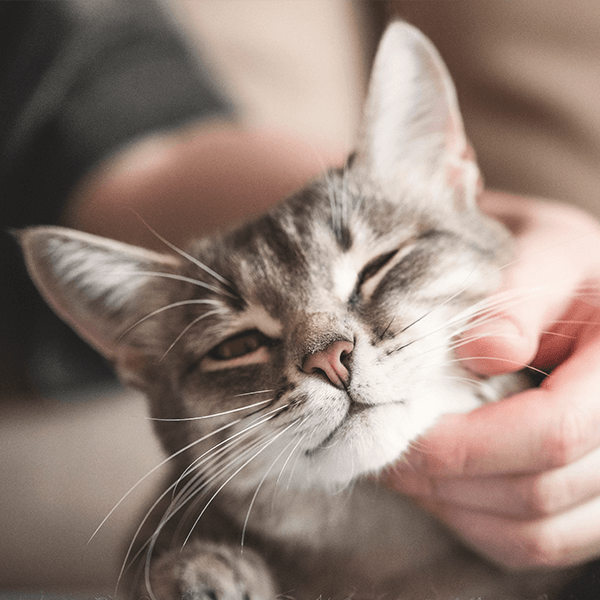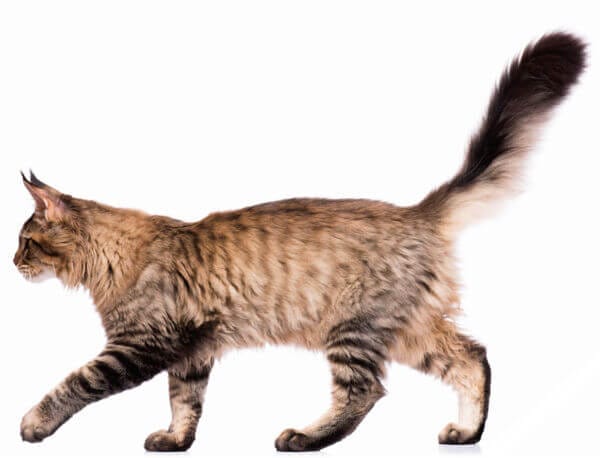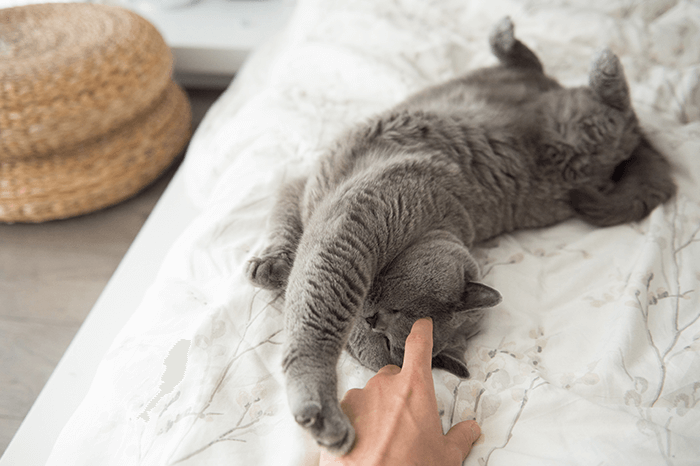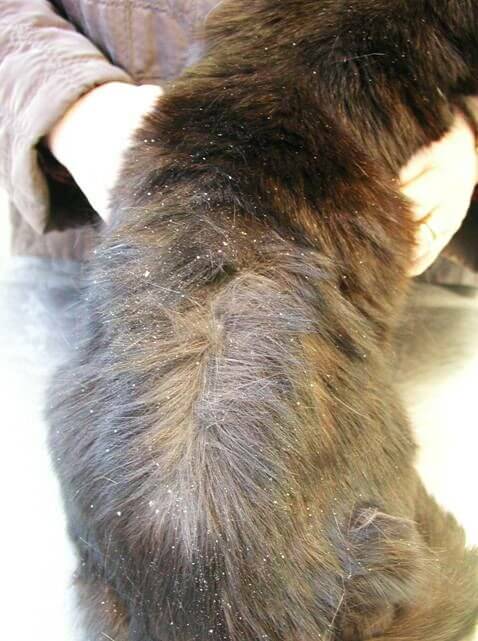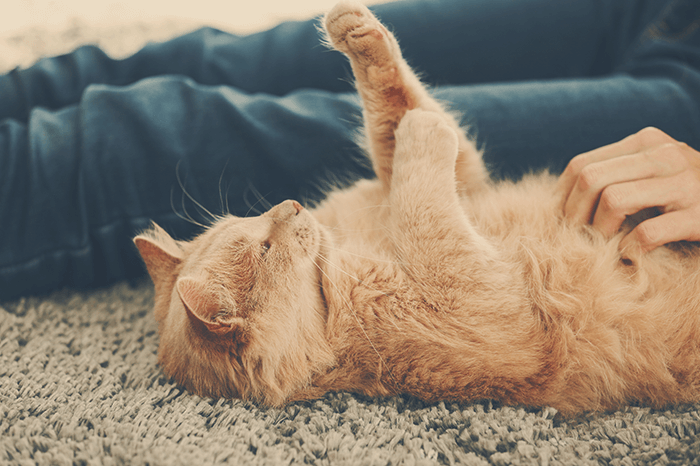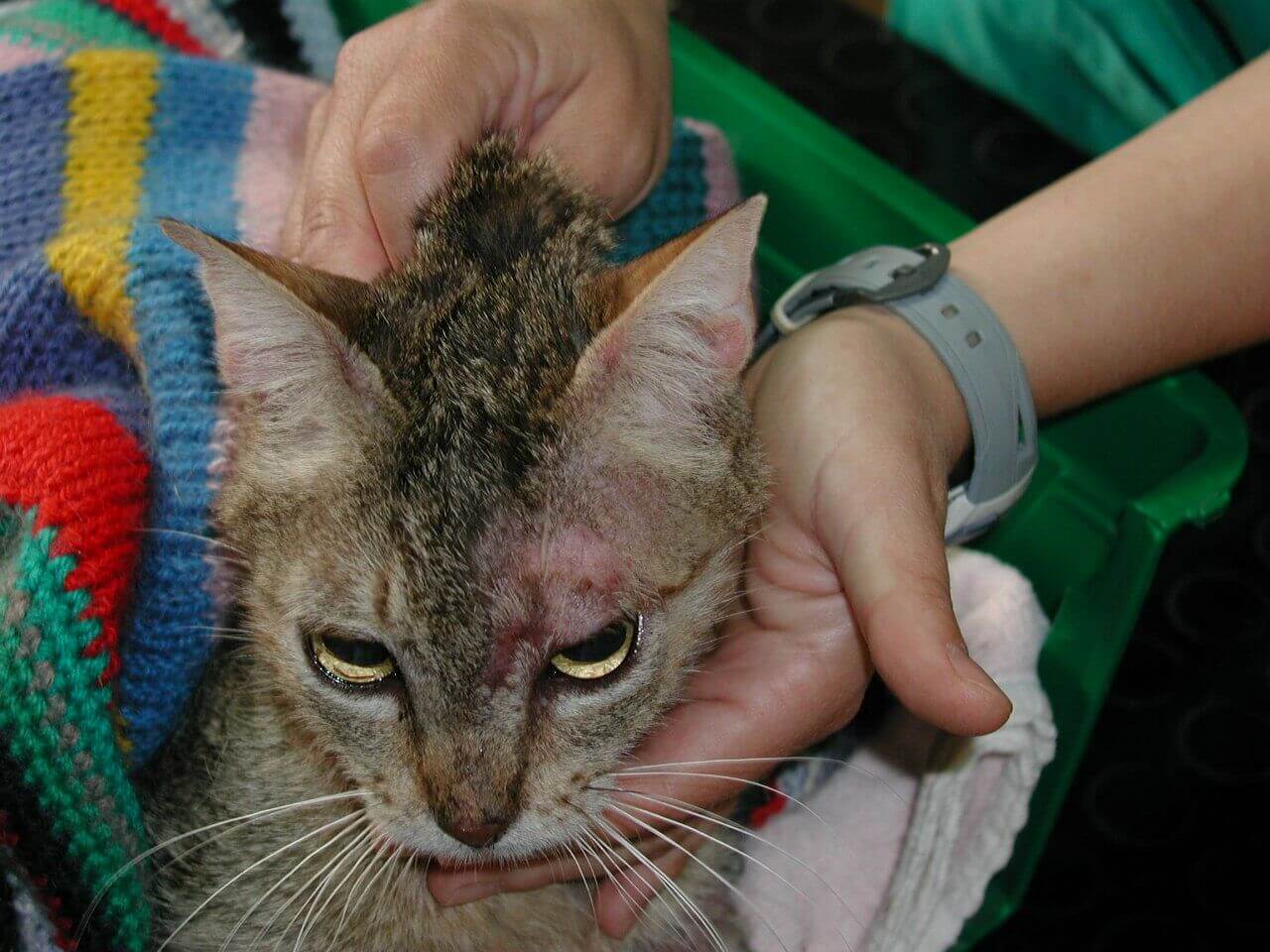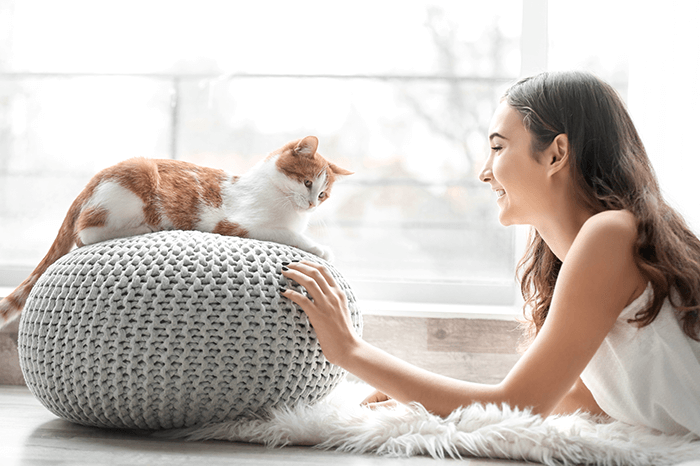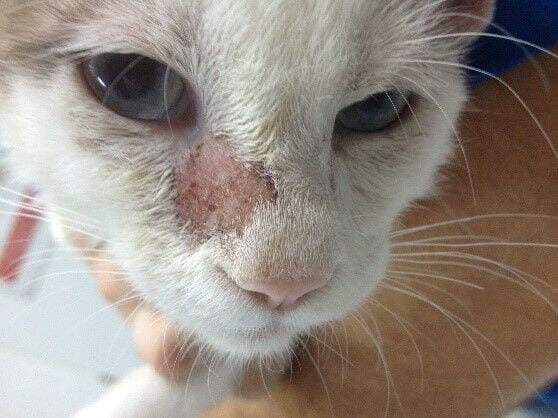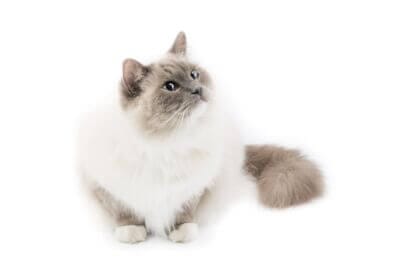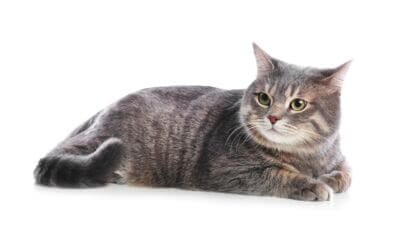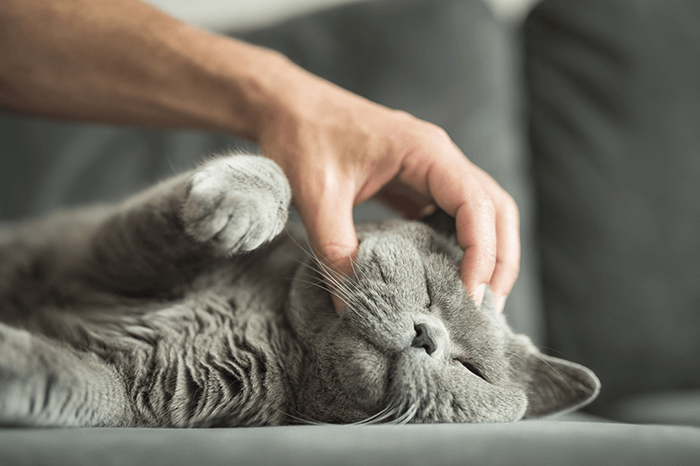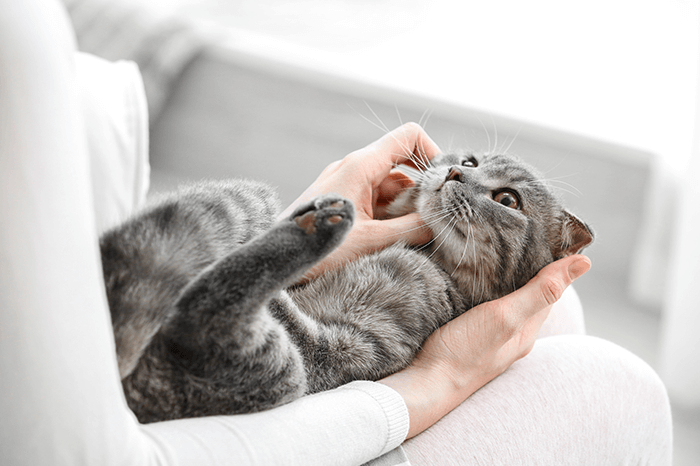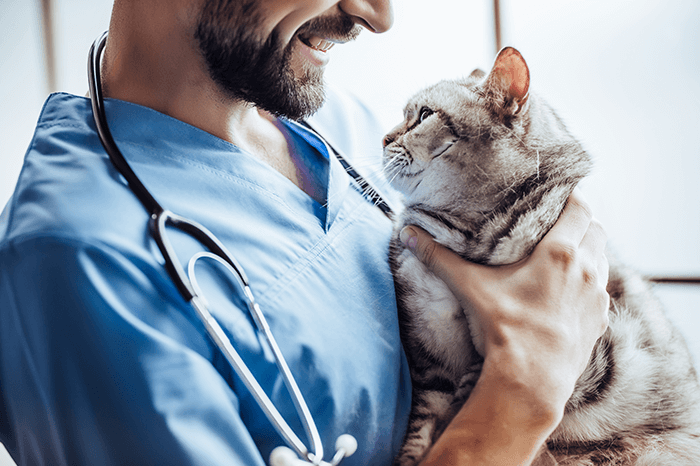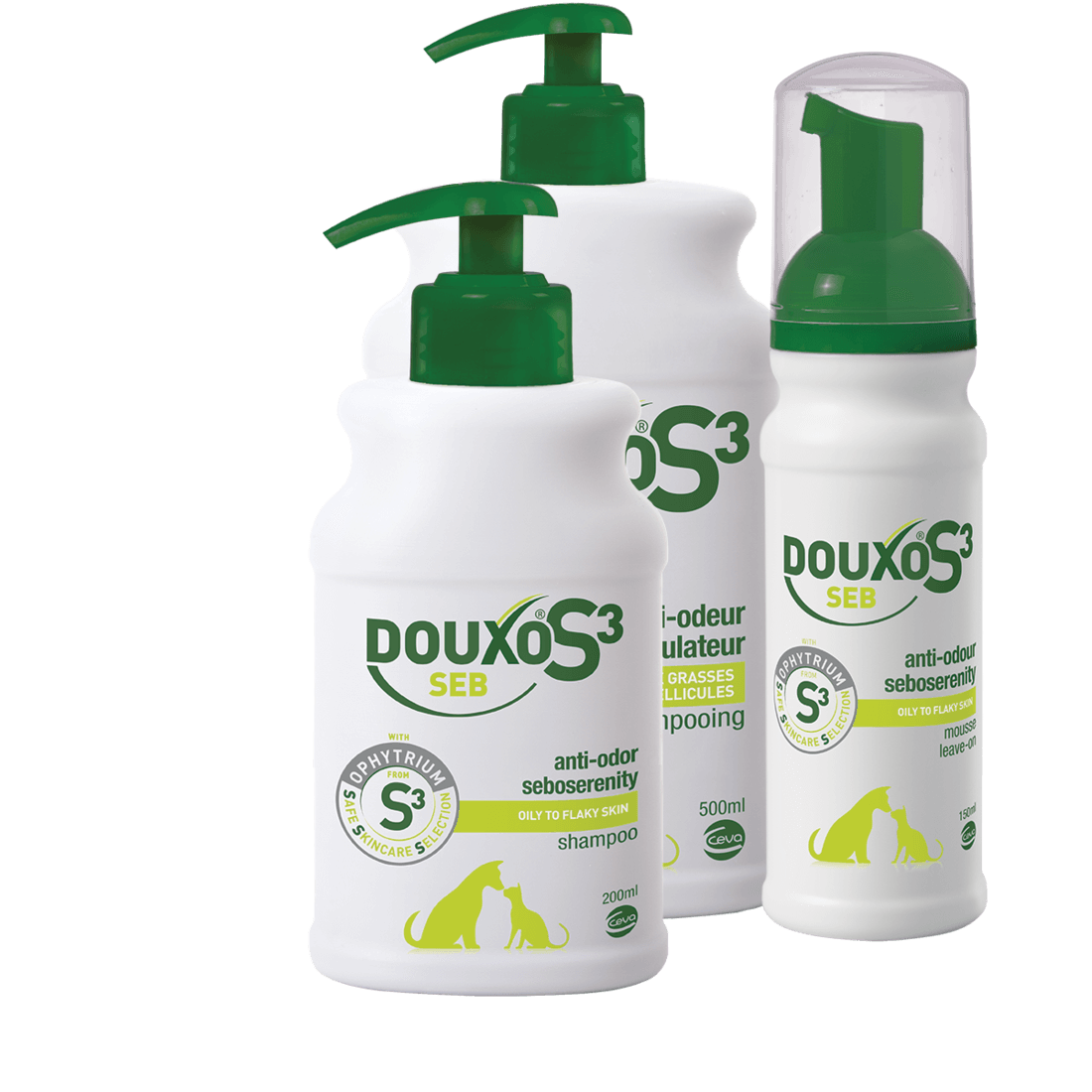Everything you need to know about dry skin and dandruff in cats
Marina G, VeterinarianDry, flaky skin with dandruff is not as common in cats than in dogs as cats are meticulous groomers. Seeing dandruff in cats is often a sign that something is going wrong.
Did you know that cats can suffer from dandruff, just as we can?
Cat's skin is an incredibly protective organ, and there are a lot of ways it can react to aggression, with changes in its texture being common. There are several skin and health problems that can cause your cat’s skin to become dry and flaky, with white flakes in the coat – you may even notice little flakes being left behind if your cat has just got up off your lap. It can be fairly mild and localised, or more severe and affecting the whole of your cat's body.
What is dandruff?
The most superficial layer of the skin, also known as the epidermis, is composed mainly of a type of cell named keratinocytes, which mature and differentiate in a process called keratinisation. This is a normal part of cutaneous (skin) regeneration, in which new cells are formed to replace the old cells that are dying and slough away in a continuous cycle. This cycle usually takes about 21 days in pets.
When there's an imbalance in the skin, this keratinisation process occurs more rapidly, and the most superficial skin cells peel off excessively, creating the flakes we commonly refer to as dandruff. This is known as dry seborrhoea or seborrhoea sicca.
One thing to note is that dandruff and dander are not the same thing; dander is the normal, healthy shedding of skin cells (and can sometimes cause allergies to cats in humans). Dandruff is an excessive shedding of skin cells due to an imbalance in the skin.
What does dry seborrhoea look like in cats?
Dry seborrhoea in cats is most often recognised as flaky, scaling skin, commonly along the back although it can be seen in localised areas.
Signs of dry seborrhoea may not always be easy to recognise, though, due to cats’ meticulous grooming habits.
However, you may notice some skin flakes falling when your cat sits on your lap for a cuddle or even on its favourite resting places.
As dry skin and dandruff are most often the results of an underlying condition, depending on what is causing them, other skin signs can be present, including hair loss, redness, crusting, itchiness, and even greasiness.
What causes dandruff and dry skin in cats?
Most often, dry skin and dandruff manifests as a reaction of the skin to underlying aggression. However, there are some cats who may have primary keratinisation disorders, which are believed to have an inherited component.
Impaired grooming abilities
There are a number of problems that can impact your cat’s ability to groom itself, which can result in accumulated dandruff. Mobility issues caused by osteoarthritis or excess weight, painful conditions, or other diseases that can cause lethargy can all lead to reduced grooming in cats and consequent accumulation of dandruff.
If you have a senior cat or if your cat is not capable of grooming itself properly, be it because of a health-related issue, or due to temporary limitations (such as having to wear an e-collar, for example), we recommend that you give them a hand in keeping their coat clean.
Cat's environment
There are many environmental factors that can exacerbate skin water loss, dryness, leading to dandruff. Examples include dry winter air and central heating causing low air humidity. Good diet is optimal for skin health, so a poor diet can also lead to dandruff. If you bathe your cat, we recommend to use a shampoo developed for pets as bathing with an inappropriate shampoo can dehydrate skin and lead to dandruff.
Conditions causing dry and flaky skin
There are many skin or other health problems that can lead to or being seen alongside flaky skin in cats, including:
Parasites
A number of parasites can lead to skin lesions in cats, be it because of direct harm to the skin, as is the case with burrowing mites, or the cat’s self-harm behaviour while trying to alleviate itchiness through scratching and grooming.
While fleas are by far the most common offender, we couldn’t help but mention a particular mite named Cheyletiella. These mites are also referred to as ‘walking dandruff’ as they look like white scales and should always be considered in cats with flaky skin even if it is not a very common condition. These can also show papule and crusts, referred to as miliary dermatitis.
Other parasites that can cause problems are Demodex, a parasite that lives in the hair follicles or on the surface of the skin that can overgrow causing skin lesions and hair loss (feline demodicosis or demodectic mange) and Notoedres cati, a mite that causes intense itching resulting in scabs and scaly skin (scabies), beginning generally on ears, then head and neck spreading afterwards.
Allergies
Even though the main sign of allergies in cats is itchiness, scratching and overgrooming are likely to follow. Further damage to the skin then occurs, which can manifest as a variety of lesions, including hair loss, excoriations, crusts and rarely greasy brownish flakes around the other lesions.
Skin infections
Skin infections can be seen alongside dandruff but most often oily skin. They are usually the result of an underlying problem that damages the skin’s protective barrier. These secondary infections can be bacterial linked of self-inflicted lesions or yeast-related (Malassezia dermatitis). The underlying problem needs to be identified to prevent from reocurrences.
Ringworm
Cats (usually young cats or cats with debilitated immunity) can also suffer from ringworm, a fungal infection that can be tricky to manage. The way ringworm manifests in cats can be highly variable. You can find ring-shaped skin lesions, bald patches of dry, flaky skin, red skin, papules and crusts.
Nutritional deficiencies
As most commercial cat foods are balanced diets, nutritional deficiencies are more often the result of gastrointestinal problems that may impair nutrient absorption than the quality of the diet itself. However, low-fat foods, usually recommended for weight loss in obese cats, can lead to dry, flaky skin.
Endocrine diseases
Hyperthyroidism and diabetes are the most common endocrine (hormonal) diseases that can affect cats. These can cause alterations in the skin’s elasticity and texture, such as thin, dry skin, scaling, dull and matted hair, and hair loss, as well as other systemic signs, which include:
- Increased thirst and urination,
- Weight loss, but increased appetite,
- Gastrointestinal signs, such as vomiting and diarrhoea.
Neoplastic and auto-immune disease
While skin tumours most often manifests as a nodule or ulcerated lesion in cats, neoplastic disease that is not localised on the skin itself can lead to cutaneous lesions, such as dry skin and dandruff, and more often a greasy coat.
Red skin and scaling on the top of the nose or tip of the ears are often seen in cats that enjoy basking in the sun due to UV damage (sunburn). These lesions can then progress to cutaneous squamous cell carcinoma, a malignant skin neoplasm that is very locally aggressive.
Although rare, autoimmune disease, such as pemphigus (where the cat’s immune system attacks its own skin), can cause dandruff and dry skin in cats.
Primary keratinisation disorders
As primary keratinisation disorders are inherited, cats are already born with these problems, and dry skin, dandruff and greasy coat tend to manifest early in life, usually within the first 6 months.
For instance, Persian, Himalayan and Exotic Shorthaired cats are known to be predisposed to primary idiopathic seborrhoea and a dermatitis affecting the face.
When to see a vet ?
If you notice your cat has dandruff and ongoing dry, flaky skin, first wonder about the air quality and if your cat is a bit overweight. If not and all the more so if you notice other signs such as redness, hair loss, without any relationship with environmental conditions, make an appointment to see your vet. Your vet will need to establish the cause of the dandruff in order to recommend the most appropriate treatment.
How is cat’s flaky skin treated?
Topical products to help your cat’s skin
When cats’ skin is dry and flaky, it usually means that the skin is fragile and would benefit from hydration. Cleaning, nurturing the skin and restoring the skin cell normal cycle are essential to restore the skin’s health and protective function.
This can be achieved by applying appropriate topical products, such as DOUXO® S3 SEB line. DOUXO® S3 SEB is carefully formulated with hydrating and moisturising ingredients, which allow the skin to return to its normal texture without further irritation and drying. Its seboregulating ingredient, Seboliance also helps regulate sebum production and regulates flakes formation while preventing secondary yeast overgrowth.
Even though most cats may not enjoy the idea of frequent bathing, we have put together some tips to help you make this as non-stressful as possible - and maybe even an enjoyable experience.
DOUXO® S3 SEB is also available in a mousse formulation, which allows your cat to benefit from the same ingredients of the shampoo, without you having to bathe your cat.
Maintain a good grooming regime
Most cats enjoy some quality time with their owners whilst being groomed, and it’s so beneficial for their health, too! Regular brushing distributes the skin’s natural oils evenly across the body, aerates the skin and coat, and removes dead skin particles. It’s a simple yet important way to help your cat if they suffer with dry skin and dandruff.
Feed a good quality diet
Feeding your cat a high quality diet is vital in keeping their skin healthy. Good quality ingredients, including essential fatty acids, all tailored to your cat’s age and health status is key. If you’re not sure what the best diet is for your cat, speak to your vet who will be able to recommend the most appropriate food.
Treatment of the underlying cause
However, as valuable as topical products are in the treatment of dry, flaky skin in cats, it is very important to try and figure out why the skin developed seborrhoea in the first place and treat the underlying condition. If your cat’s skin is flaky and dry, don’t hesitate to book an appointment with your vet.
